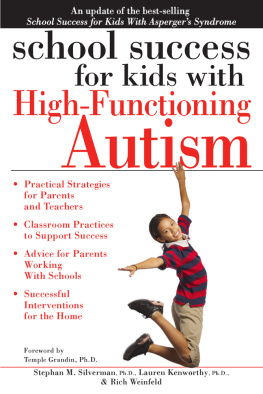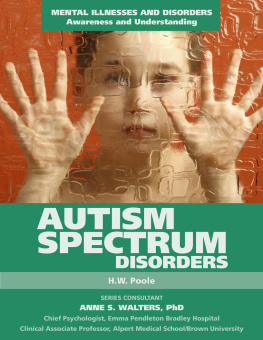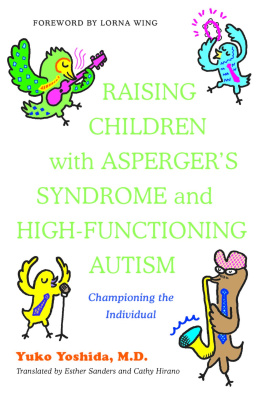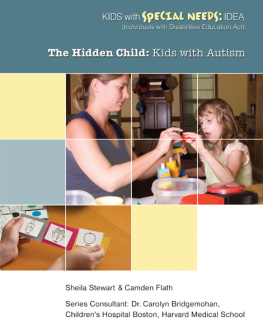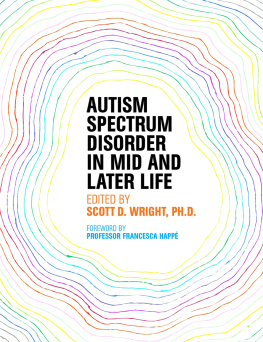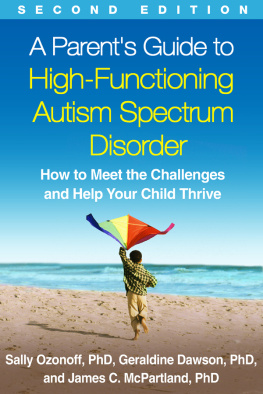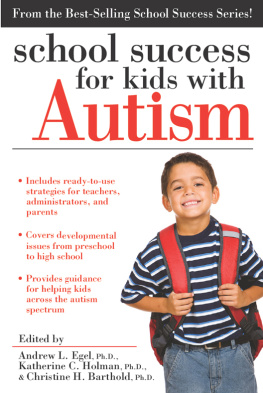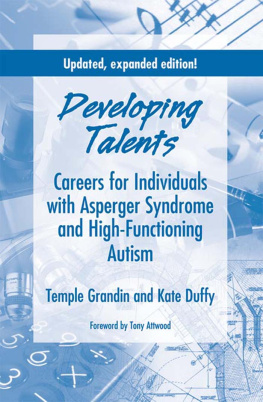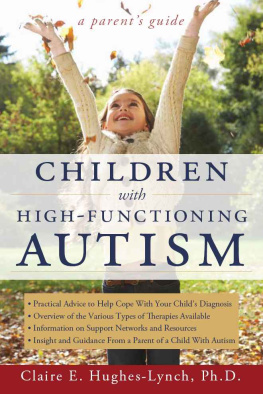
Dedication
To our parents, Milton and Judith Silverman, Rosalind and Eldon Kenworthy, and Charles and Irene Weinfeld, who gave us the gift of the love of learning and always held high expectations for each of us.
We also would like to dedicate this book to our spouses, Karin Silverman, Eric Schaeffer, and Sara Shelley, in appreciation of their love, support, and patience that made this project possible.
Copyright 2014, Prufrock Press Inc.
Edited by Lacy Compton
Layout design by Raquel Trevino
ISBN-13: 978-1-61821-213-9
No part of this book may be reproduced, translated, stored in a retrieval system, or transmitted, in any form or by any means, electronic, mechanical, photocopying, microfilming, recording, or otherwise, without written permission from the publisher.
At the time of this books publication, all facts and figures cited are the most current available. All telephone numbers, addresses, and websites URLs are accurate and active. All publications, organizations, websites, and other resources exist as described in the book, and all have been verified. The authors and Prufrock Press Inc. make no warranty or guarantee concerning the information and materials given out by organizations or content found at websites, and we are not responsible for any changes that occur after this books publication. If you find an error, please contact Prufrock Press Inc.
 | Prufrock Press Inc.
P.O. Box 8813
Waco, TX 76714-8813
Phone: (800) 998-2208
Fax: (800) 240-0333
http://www.prufrock.com |
Acknowledgements
We would like to acknowledge Drs. Brenda Smith Myles, Taruna Ahluvalia, Annie McLaughlin, Marcy Jackson, Shawn Lattanzio, Dan Shapiro, Sabra Gelfond, and Bill McGrath for their insightful comments on this book. We would also like to express our gratitude to our editor, Lacy Compton.
We are grateful to Dr. Temple Grandin for taking the time review our book and provide a valuable foreword. She continues to lead and inspire both through her words and through her ongoing achievements.
We also would like to acknowledge the many families we have worked with, the school administrators and teachers we have had the privilege to collaborate with, and finally, the students with HFASD themselves, who provide us with daily inspiration.
Foreword
I really liked the way this book emphasized using the childs strengths and special interests to motivate schoolwork. My ability in art was always encouraged, and artistic skills formed the basis of my career designing livestock handling facilities. Half the cattle in the U.S. are handled in equipment I designed. Today I am a professor of animal science at Colorado State University. When I was a young child, I was totally nonverbal until age 4 and I had all of the behavioral symptoms of severe autism. When I was young, many people thought I was mentally retarded. Fortunately, I had a great early education program and both my mother and good teachers helped me to be successful.
Autism a Broad Spectrum
One of the difficulties in educating children with autism is that it is such a broad spectrum. Autism spectrum disorder (ASD) ranges from highly gifted individuals to individuals who remain nonverbal with severe handicaps. I have observed problems with some teachers not being able to shift gears between teaching a highly gifted child on the autism spectrum and teaching a nonverbal child with intellectual disabilities. Kids on the high end of the autism spectrum often have uneven skills. They may be gifted in one subject and be below grade level in another subject. I am a visual thinker and all my thoughts are in pictures. This made learning algebra impossible. Another cognitive type, which may occur on the autism spectrum, is the mathematical pattern thinker who is good at math and may have problems with reading. A third type is a verbal thinker who is good at writing. The scientific studies that provide evidence for these different types of thinkers are reviewed in my book The Autistic Brain.
Bust Down the Boundaries Formed by Labels
I go to many conferences and work in industry with many different people. During my career, I have traveled back and forth between the livestock technical world, the autism world, and the gifted child world. From my experiences, I have learned that there is little communication between these worlds. There is a huge need to bust down the silos between the different groups to help bright kids who are different to succeed. When I go to a gifted conference, I see the same little geeky kids that I see at an autism conference. When I visit Silicon Valley, I see undiagnosed people with high-functioning autism or Aspergers working at high-paying jobs. At the meat plant, I have seen many undiagnosed people working in the maintenance department. They were saved by taking welding, auto mechanics, or carpentry in high school. I think it is terrible that many schools have stopped teaching these hands-on classes. Unfortunately, I see too many gifted kids getting an autism label and they end up getting addicted to video games and unable to hold a job. This happens because they became their label and there are not enough expectations for achievement.
Direct Fixations Into Careers
Kids with autism often become fixated on their favorite things. Too often, I am seeing bright kids who get fixated on their autism diagnosis instead of getting fixated on something they could turn into a career, such as astronomy, math, drama, art, or science. To get kids fixated on useful things that could be shaped into a career requires exposing them to interesting things. In high school, I got fixated on building an Ames distorted room optical illusion after I viewed it in a science movie. This was beautifully shown in the HBO movie about my life. My high school science teacher was a great mentor who got me turned around and interested in studying.
Parents and teachers need to expose kids to lots of interesting activities and studies that can lead into a career, such as computer programming, art, and building things. TV watching and video game playing needs to be limited to one hour a day and the virtual computer world needs to get connected back to the real world. One resourceful mom took her sons fixation on the video game Minecraft and made real wood Minecraft blocks for her son and the neighborhood kids to play with. This provided a connection between building things in the virtual world and building structures in the real world. This also provided socialization with other children through a shared Minecraft interest. We must not let kids become recluses in their rooms.
When I was tortured in high school with teasing, shared special interests were refuges from bullies. My science teacher had a model rocket club, and I was an avid builder of rockets. There was no teasing during model rocket activities. The kids that did the teasing were not interested in rockets. All my friends in high school engaged in the same special interests of horseback riding, model rockets, and electronics. Educators need to get kids involved with making things. We had to build all our rockets. I was horrified to see an advertisement for prebuilt rockets. Designing, building, and testing a rocket for stability teaches practical problem solving.
Teaching Work Skills
Teaching work skills needs to start way before kids graduate from high school. I am seeing too many kids graduating from high school with no work skills. Learning work skills should start with having elementary school kids do household chores. Too often, parents overprotect a child who is labeled with autism spectrum disorder. Parents need to stretch these kids and teach basic skills such as shaking hands, crossing a road safely, and table manners. I like the term stretch because you need to move them just outside their comfort zones in order for them to develop. There should be no sudden surprises because that causes panic.
Next page
